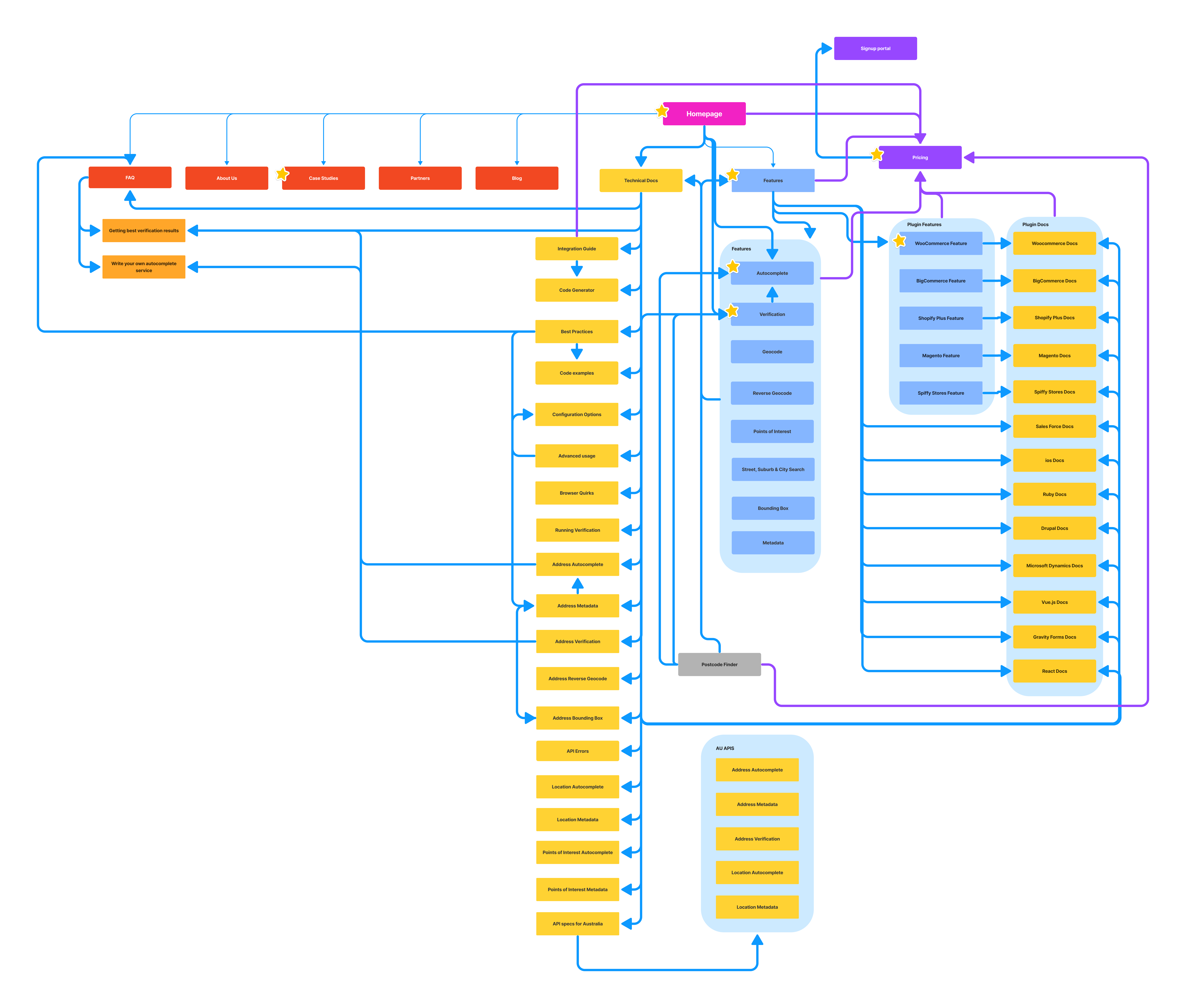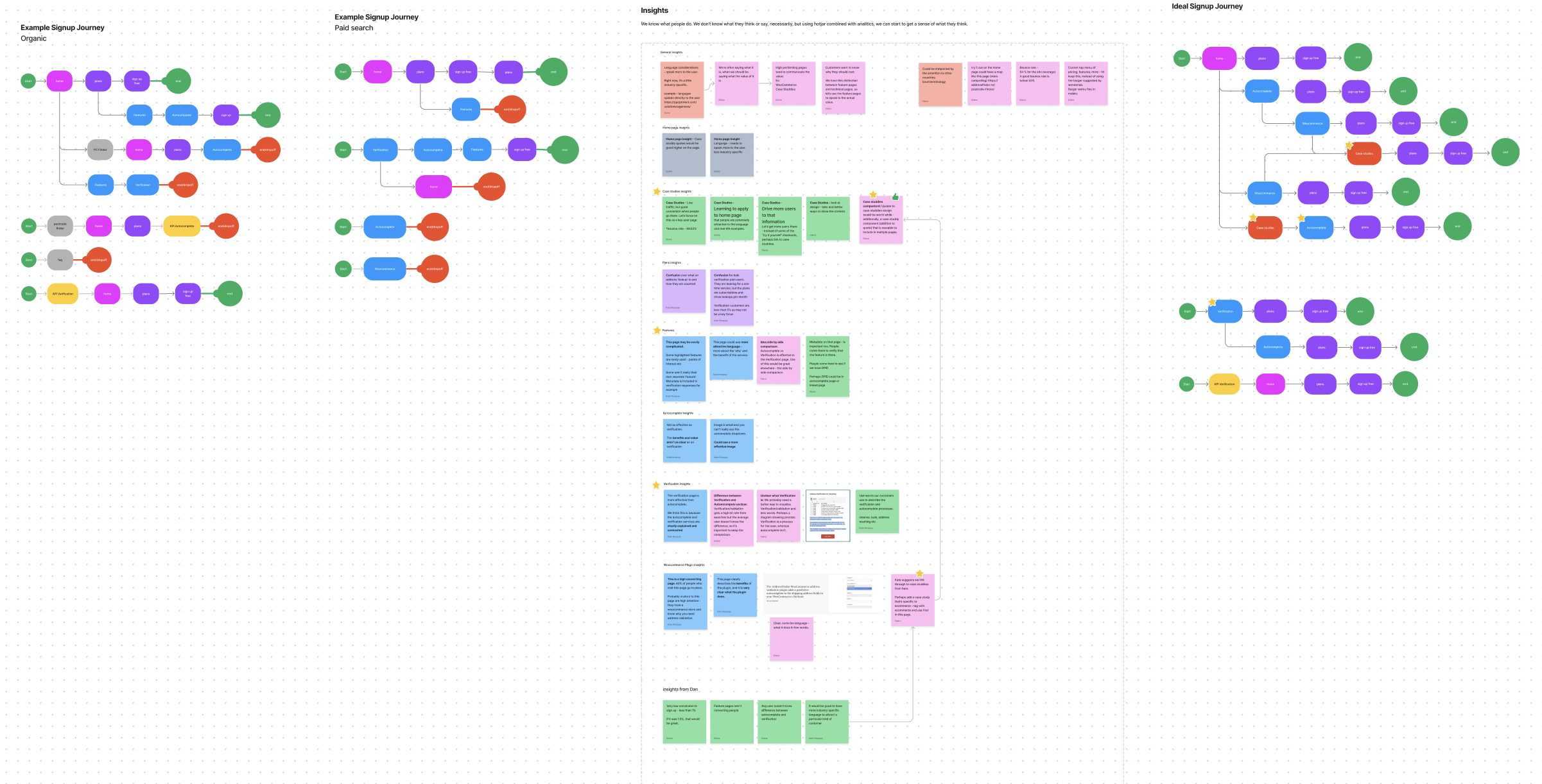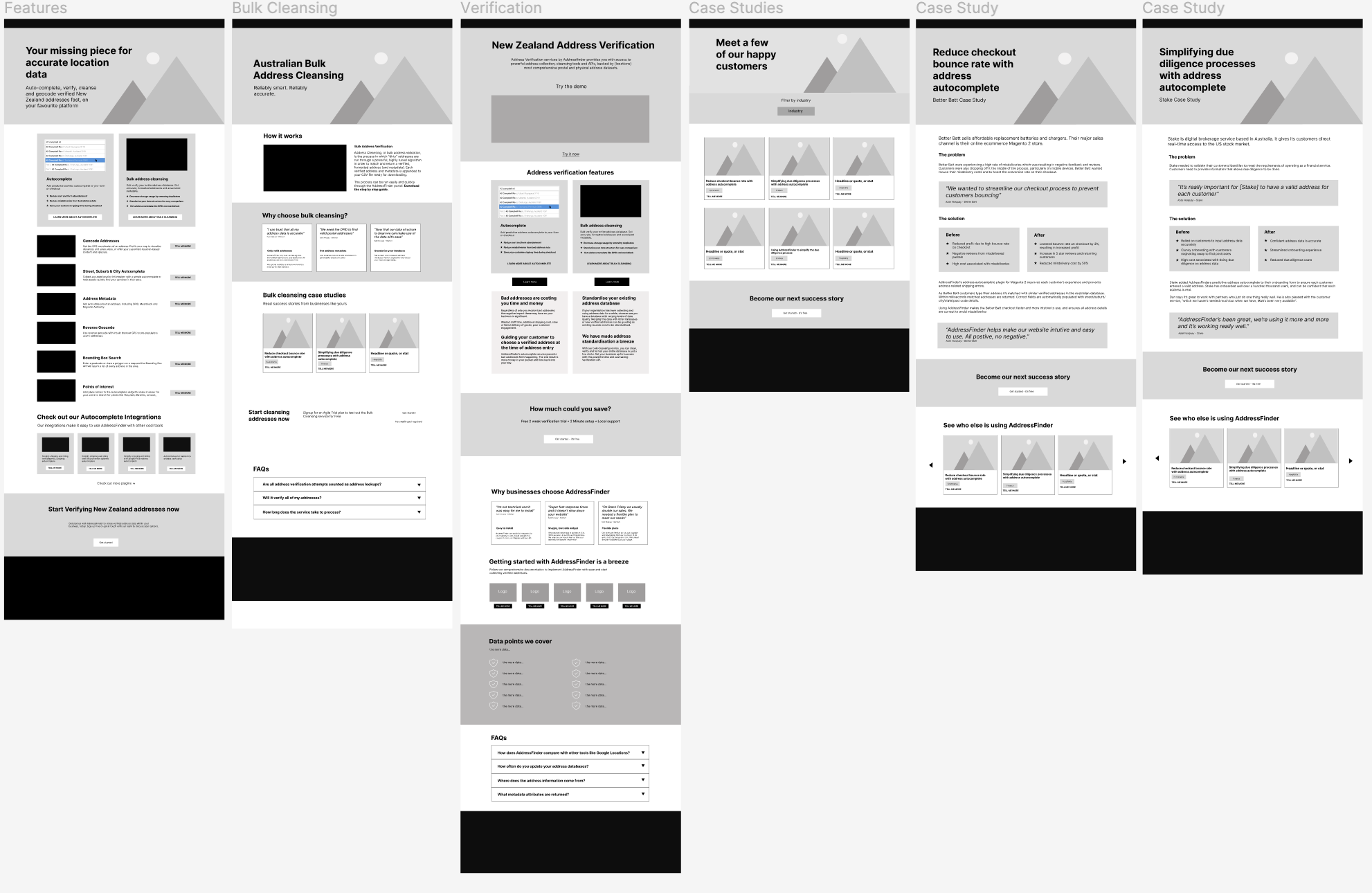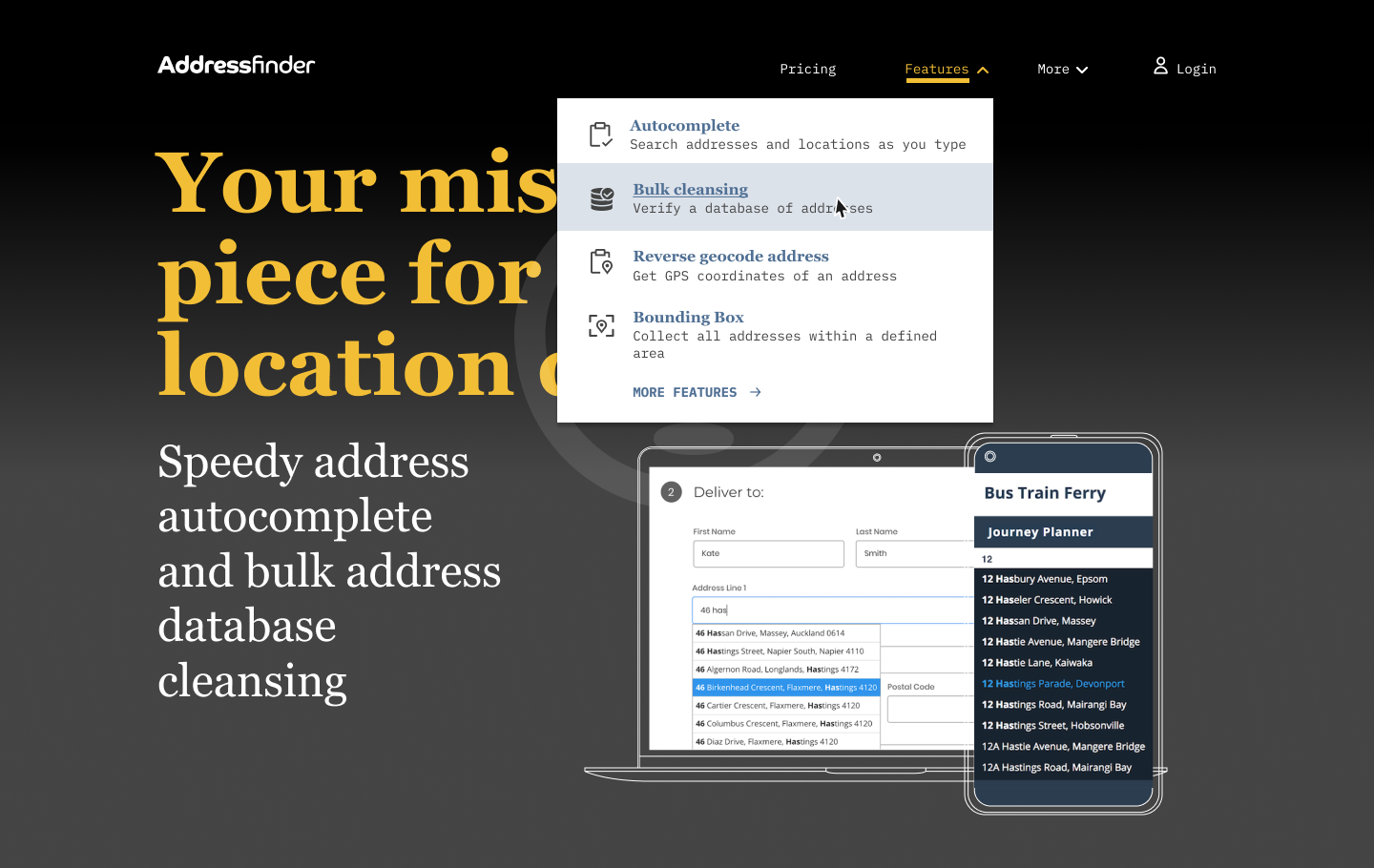Addressfinder
UX design, UI design, content strategy & content design
The challenge
Like many websites, the Addressfinder site had, for the most part, grown organically and without a clear pathway for the users. As Addressfinder underwent a new brand design, it was a good opportunity to also redesign the site with a user-focus.
With only a 1.9% conversion rate from the features page to sign up and less than 1% conversion from visitors at the site, the current site didn’t connect or communicate to users clearly enough to get them to sign up for Addressfinder service.
My contributions
As the UX Practice lead, and the only senior UX designer, I was the architect of our design and research strategy. We had one junior UX designer whom I took under my wing, showing her the process we would use to achieve great outcomes for the users.
I worked closely with the product owner on the client side, leading the UX design and working in an Agile way. We moved from research to synthesis and pulled key insights. Leading the junior UX designer, we redesigned the site from architecture to wireframes and fleshed out the design system further, as well as redesigned key pages and introduced new modular components.



